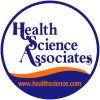
At Health Science Associates, we prioritize providing businesses with the tools and knowledge they need to create safe and compliant work environments.
Recent updates to Cal/OSHA’s lead standards (effective January 1, 2025) reflect significant advancements in protecting workers from occupational lead exposure.
These amendments impact the Construction Industry (Title 8, Section 1532.1) and General Industry (Title 8, Section 5198), making it crucial for employers to understand the changes and implement updated safety measures. Here’s what you need to know and how to prepare.
Understanding the New Cal/OSHA Lead Standards
The updated lead standards strengthen protections for workers exposed to lead in both the construction and general industries. These changes address advancements in health research and the need for more stringent exposure limits and control measures.

Key Highlights of the Updates
- Lower Permissible Exposure Limits (PELs): The new standards reduce acceptable airborne lead exposure limits, requiring enhanced monitoring and control strategies.
- Improved Exposure Assessment: Employers must perform regular exposure assessments using air monitoring and biological sampling to ensure compliance.
- Enhanced Medical Surveillance: Employers are now required to offer more comprehensive medical surveillance for workers exposed to lead, including blood lead level (BLL) monitoring.
- Written Lead Compliance Programs: Businesses must develop and implement detailed lead compliance programs tailored to their work environment.
For specific regulatory text, refer to the Construction Industry Standards and General Industry Standards.
Educational Resources to Support Compliance
Cal/OSHA has created a wealth of resources to help employers comply with the updated regulations. These materials provide actionable guidance for assessing risks, managing lead exposure, and implementing safety programs.
Key Resources
- Occupational Lead Exposure Prevention Guidance: Comprehensive information on managing occupational lead exposure.
- Model Written Lead Compliance Program: A ready-to-use template for developing your company’s compliance strategy.
- Lead Exposure Assessment & Incident Reporting: Guidance on assessing workplace exposure and reporting incidents.
Employers are encouraged to review these resources and incorporate them into their workplace safety programs.
Steps to Ensure Compliance
1. Perform a Comprehensive Risk Assessment
Evaluate your work environment to identify tasks and areas with potential lead exposure. Use air monitoring and surface sampling to determine whether lead levels exceed the new PELs.
2. Develop a Written Lead Compliance Program
Create a tailored program that includes:
- Methods for reducing lead exposure, such as engineering controls and personal protective equipment (PPE).
- Medical surveillance protocols.
- Employee training on lead hazards and safe work practices.
3. Implement Engineering and Administrative Controls
Where feasible, reduce exposure through engineering solutions like local exhaust ventilation. Administrative controls, such as rotating job assignments or modifying work schedules, can also help minimize risk.
4. Provide PPE and Hygiene Facilities
Ensure workers have access to appropriate PPE, including respirators, gloves, and protective clothing. Additionally, provide facilities for decontamination to prevent lead exposure outside the workplace.
5. Train Employees
Educate workers on the risks of lead exposure, safe handling practices, and the importance of medical monitoring. Accessible training materials, such as the Lead in Construction – Information for Employees Fact Sheet, can enhance understanding.
Why Compliance Matters
Protecting Worker Health
Lead exposure can result in serious health issues, including neurological, cardiovascular, and reproductive disorders. Compliance with the updated standards reduces these risks, safeguarding your workforce’s health.
Avoiding Penalties
Failure to meet regulatory requirements can result in significant fines and legal consequences. Staying informed and proactive ensures compliance and minimizes potential liabilities.
Enhancing Workplace Morale
Workers are more likely to feel valued and perform at their best when their health and safety are prioritized.
How Health Science Associates Can Help
At Health Science Associates, we specialize in industrial hygiene and workplace safety consulting. Our Certified Industrial Hygienists (CIHs) and safety experts can assist you in navigating these regulatory changes.
Here’s how we support your compliance efforts:
- Exposure Assessments: Conduct air monitoring and biological sampling to evaluate lead exposure levels.
- Program Development: Help you create or update your written lead compliance program.
- Employee Training: Provide tailored training sessions to educate your team on the new standards.
- Regulatory Guidance: Offer ongoing support to ensure your workplace meets or exceeds compliance requirements.
Final Thoughts
The updated Cal/OSHA lead standards represent a significant step forward in protecting workers from the harmful effects of lead exposure.
By understanding and implementing these changes, employers can create safer workplaces, meet regulatory obligations, and promote long-term employee well-being.
For more information on how Health Science Associates can assist with compliance, contact us today. Together, we can ensure your workplace remains safe, compliant, and prepared for the future.
